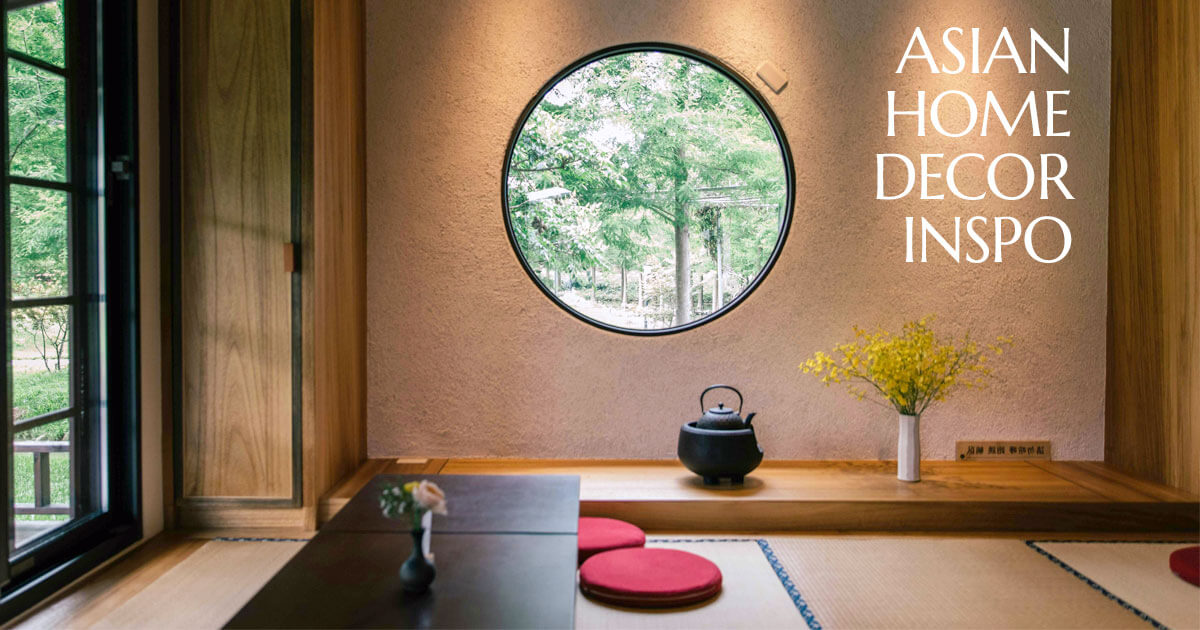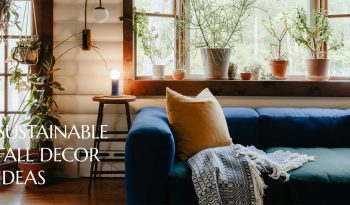Before we get started, a little confession: here at Lanna Passa, we might be a little bit biased when it comes to Asian-inspired home decor. It’s obviously a huge part of our everyday life, both in our home and as our brand and business. Though far beyond our doorstep, it’s a much-loved interior style. Most people are familiar with its effortless blend of minimalism and natural elements. There’s a true design harmony there, one that is full of cultural richness and effortless beauty.
So, you’re trying to create a serene living space? Where to start? Get some design inspo from the mindful and sustainable ethos of Asian decor. The tranquil elegance of Japanese Zen, the vibrant craftsmanship of Northern Thai textiles, and the bold sophistication of Chinese design. Trust us, Asian-inspired interiors will always be on-trend, through 2025, 2026, and beyond. It’s truly a timeless vibe, perfect for bringing balance, beauty, and a calming zen to your home.

The Essence of Asian Home Decor & Design
Asian-inspired home decor emphasizes simplicity and functionality while having a deep connection to nature. Rooted in traditions from Japan, Thailand, China, and beyond, Asian interiors tend to be ‘soft’. Plenty of clean lines, soft and curved with rounded edges rather than straight and sharp. In this world, natural materials and intentional design are key. Think bamboo furniture, rice paper screens, and bamboo-green color palettes.
What makes minimalist Asian interiors so popular? We think it’s the focus on handcrafted and sustainable elements. They’re a reflection of respect for both traditional culture and the environment in general. Asian-inspired decor is perfect for contemporary, eco-conscious living and serene home design.
Key Elements of Asian Zen Interior Design
To create an authentic Asian-inspired space, try to incorporate these core elements. Each reflects the cultural and aesthetic principles celebrated by us here at Lanna Passa.

Natural Materials for Organic Warmth
Natural materials like bamboo, wood, and stone are foundational to Asian design. Bamboo is almost the quintessential design material in Asia. We’ve highlighted how bamboo is perfect for biophilic design in previous journal entries. Using it for furniture, such as a sleek bamboo coffee table or shelving unit, adds texture to a space. We’ve taken a look at using bamboo and natural wood in home office design, too.
In contrast to bamboo, teak or cedar wood accents are more commonly found in Chinese and Japanese furniture, bringing warmth and durability. Then there are those beautiful stone or ceramic vases, inspired by traditional Japanese Zen gardens. These can serve as understated focal points, as they are small but with a large visual impact. A simple yet effective design choice when it comes to Zen-inspired decor.
It’s not all wood and greenery either (otherwise your living space is basically going to be a greenhouse). Put down a nice woven jute rug or add a rattan chair for seating, and you’ve got more of the organic feel without overwhelming your space.

Pro Tip: Go the extra mile with your commitment to environmental mindfulness and look for some lovely reclaimed materials.
Minimalist Design for Tranquility
Asian interiors embrace minimalism, creating uncluttered spaces that promote peace and clarity. Japanese Zen aesthetics, in particular, favor open layouts and functional furniture with clean lines. You can get a Muji or Zen look on a budget too, since you don’t need much going on. A low-profile platform bed or a simple tatami mat can give you an Asian-inspired bedroom, and you won’t cry when you look at your bank balance. The main thing to avoid is over-decorating. Just choose a few meaningful pieces, like a hand-painted ceramic bowl or an ethnic Thai cushion, to add subtle elegance.

Pro Tip: Use neutral (boring) tones like beige, white, or gray as a base and then accent with little pops of color. Think Chinese red or Thai turquoise (as seen in our dip-dyed lighting collection).
Cultural Accents for Authenticity
Incorporate cultural elements to add depth and character. Thai textile patterns can be introduced through ethnic throw pillows. Look for natural wood wall hangings with lotus or geometric motifs. Chinese calligraphy art or Japanese ukiyo-e prints are a gorgeous way to add a touch of heritage to walls, too. A small Buddha statue or a jade figurine are typical go-tos when we think of Asian home decoration, but take care when using religious emblems and icons – ensure it’s done in a respectful and tasteful manner.

Soft Lighting for Ambiance
Lighting plays a crucial role in building an Asian-inspired space and this is where we know a thing or two. For Zen lighting ideas, of course you have your classic paper lanterns inspired by Japanese shoji screens, diffusing light softly, enhancing the Zen aesthetic. Bamboo or ceramic table lamps with neutral shades add understated elegance. For a Thai-inspired touch, consider our Thai woven lanterns with a proud handcrafted aesthetic.
Our number one choice for capturing the Far East aesthetic? This classic Asian pendant light shade with an authentic cone-shaped weave of bamboo. (Pictured below)

Nature-Inspired Greenery
Bringing nature indoors is a classic hallmark of Asian interior design. What about kokedama moss balls or bonsai trees? Rooted in Japanese tradition, these are perfect examples of minimalist greenery intertwined with Asian culture. Potted orchids or bamboo stalks, often seen in Thai and Chinese decor, bring elegance and symbolism (luck and growth). A small indoor Zen garden with sand and stones can serve as a meditative centerpiece.
Pro Tip: Place plants strategically near windows or in corners to enhance flow and balance, a principle aligned with feng shui and Lanna Passa’s mindful approach.

Creating a Home With Far East Influences
Completely transforming your home into your own little sanctuary of the Far East isn’t difficult, nor does it have to be expensive. Stick to a few key elements: embrace simplicity, nature, and cultural depth. Bring in some bamboo and natural wood with some authentic cultural accents, such as Thai textiles or Japanese Zen elements, and you can easily create a timeless and tranquil living space.
Remember lighting, too. Aim for soft lighting with a natural feel; bonus points if you use our handwoven bamboo lanterns. Add some nature-inspired greenery, such as bonsai or kokedama. Not only will it double down on the calm, but it also adds some lush green tones to the space.
Start small, stay intentional, and let your space reflect the effortless beauty of this enduring style.


